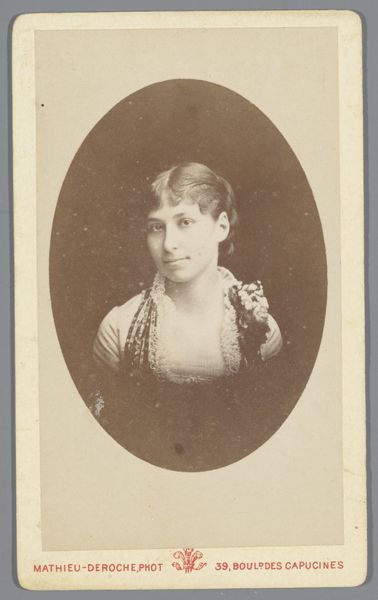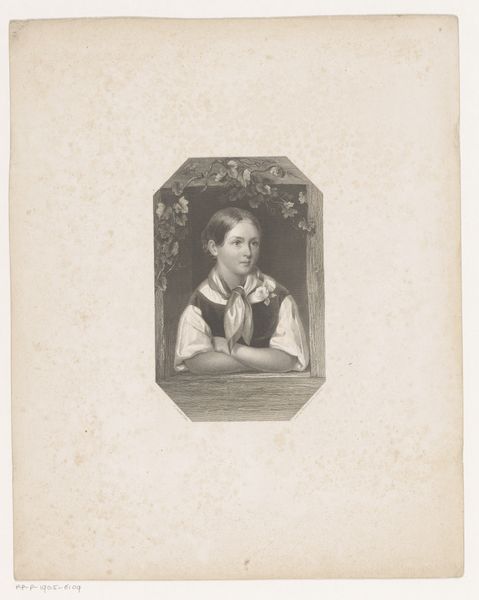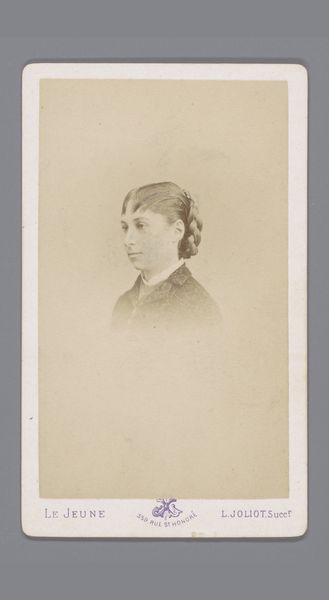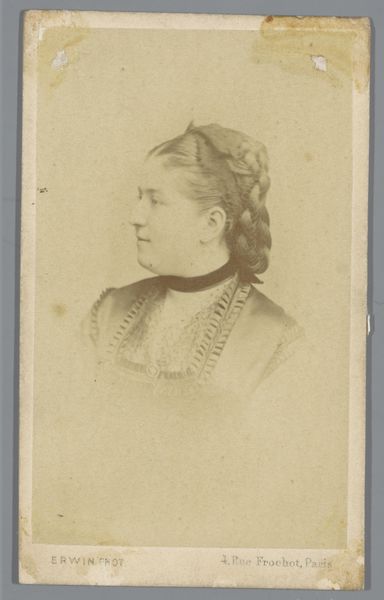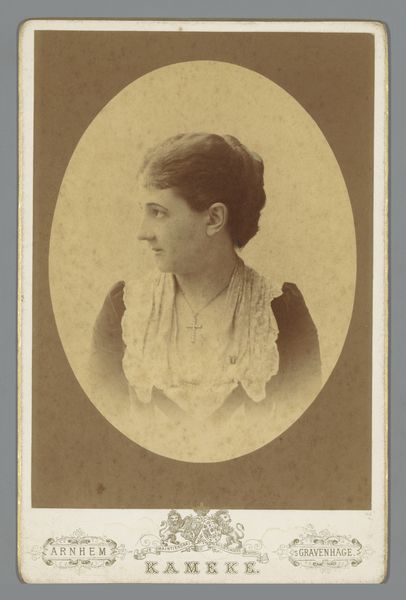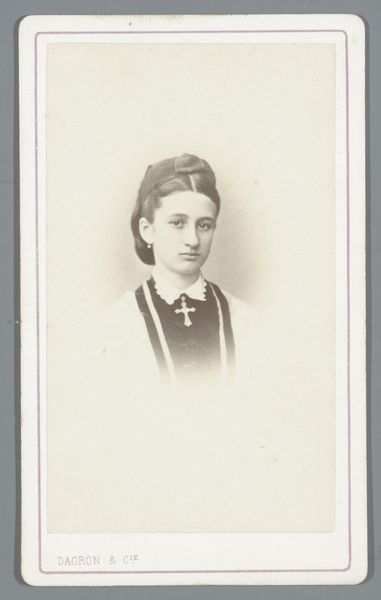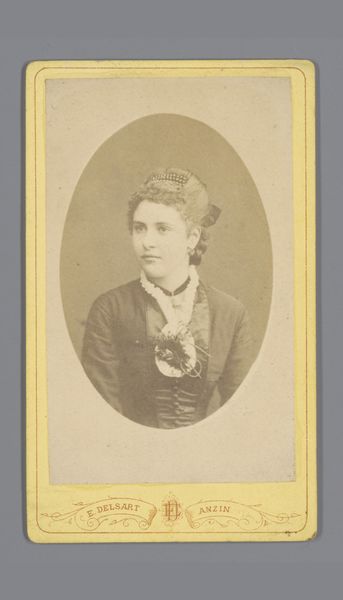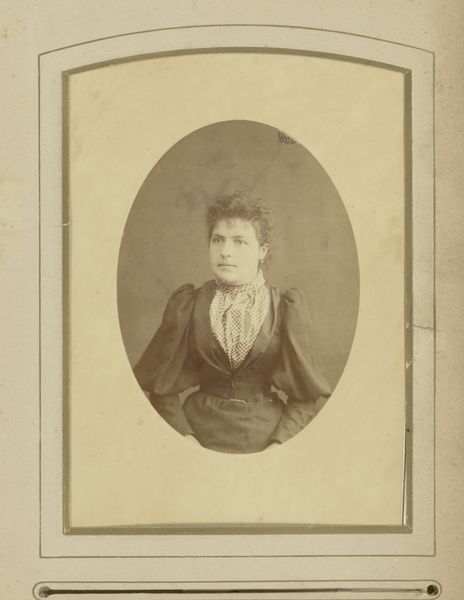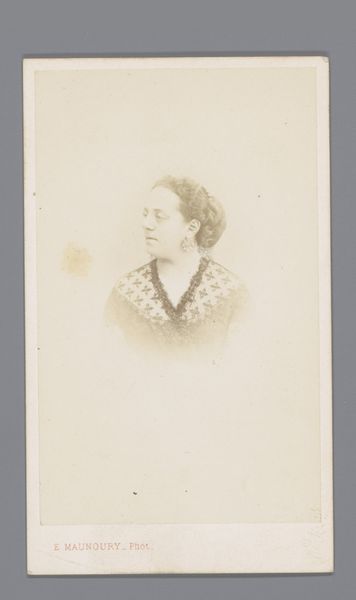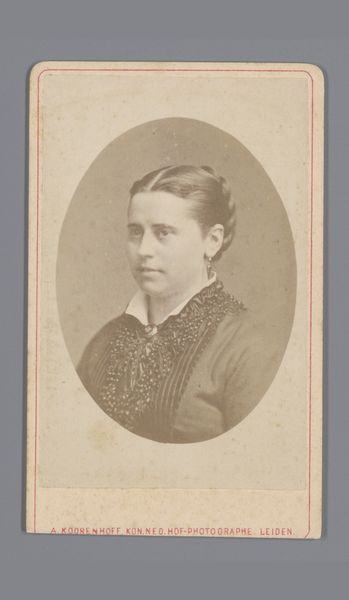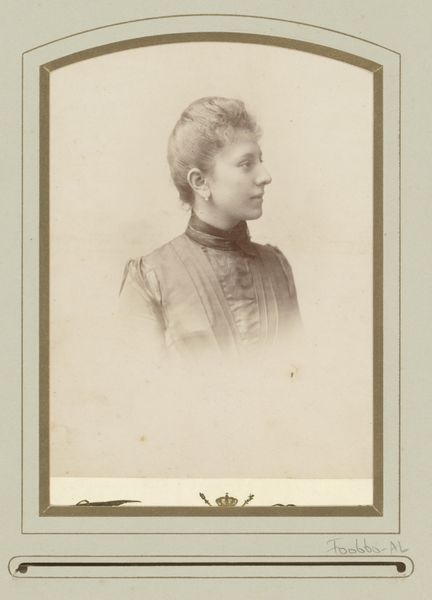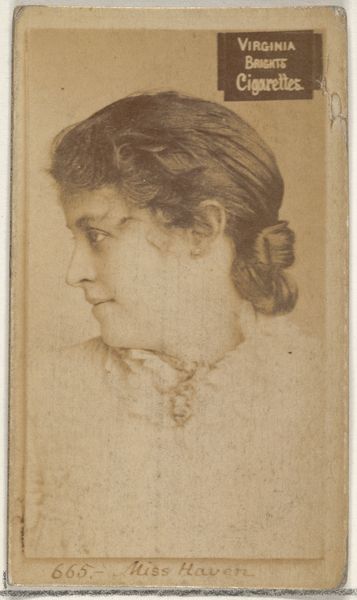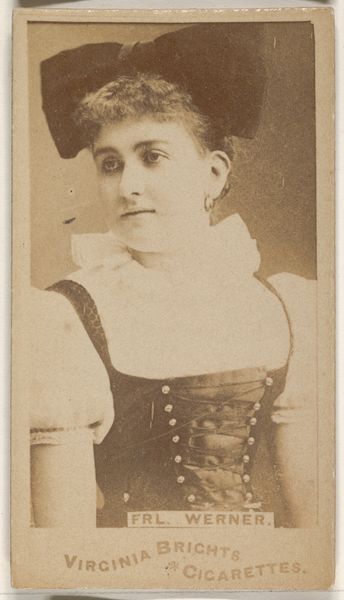
drawing, pencil, engraving
#
pencil drawn
#
drawing
#
pencil sketch
#
charcoal drawing
#
pencil drawing
#
pencil
#
line
#
portrait drawing
#
academic-art
#
engraving
#
realism
Dimensions: height 164 mm, width 125 mm
Copyright: Rijks Museum: Open Domain
Curator: This is a captivating portrait of an unknown woman created by Louis Jaugey, sometime between 1850 and 1899. The artwork is rendered using pencil and engraving techniques. Editor: I find myself immediately drawn to her expression. There's a certain reservedness, perhaps a hint of melancholy in her gaze. Curator: Indeed. Jaugey's skillful use of line work gives her face a tangible presence. The formal qualities speak volumes about the sitter's social standing, I think. Notice the elegance of her hair and the detail of her jewelry. It is probably worth asking about the codes or the history of such apparel elements at the time, but the title fails to tell anything specific, therefore one must be cautious in their interpretation. Editor: Precisely. The high neckline, coupled with the pearl hair embellishments, implies wealth and status, possibly restricting us from even learning this woman's name. It makes me wonder about the societal pressures she may have faced during this time, given the period of constraints for women's independence. Curator: It is not by chance that she is never mentioned or was forgotten from an official record; portraiture, especially during the 19th century, often served to legitimize social hierarchies. The portrait would be displayed and admired at domestic, private environments to set its own values or position in front of visitors. I think she looks directly at us with great seriousness. Editor: Right. And it's intriguing that the artist chose to depict her in this somewhat austere style. The absence of excessive ornamentation and background is striking. We ought to consider who would own, use, commission or trade with such portrait at that time. There must have been a clear role of these artworks. Curator: Indeed. That focus might underscore her individual character within the limits set to it by society. The level of skill indicates she was a very valued sitter at the time of commissioning the work. Editor: Absolutely. By immortalizing her in art, even without her name, it offers a space to reflect on the experiences of women within a time where they did not receive similar acknowledgement. I still feel an immediate emotion, almost a sort of empathy for someone with this expression so marked and so unknown to us. Curator: It is through the examination of works such as these, that we may have a better sense of the complexities behind portrait conventions, their socio-political use at the time, and maybe better imagine the history of its model. Editor: Yes, a silent testimony to the stories yet untold.
Comments
No comments
Be the first to comment and join the conversation on the ultimate creative platform.
